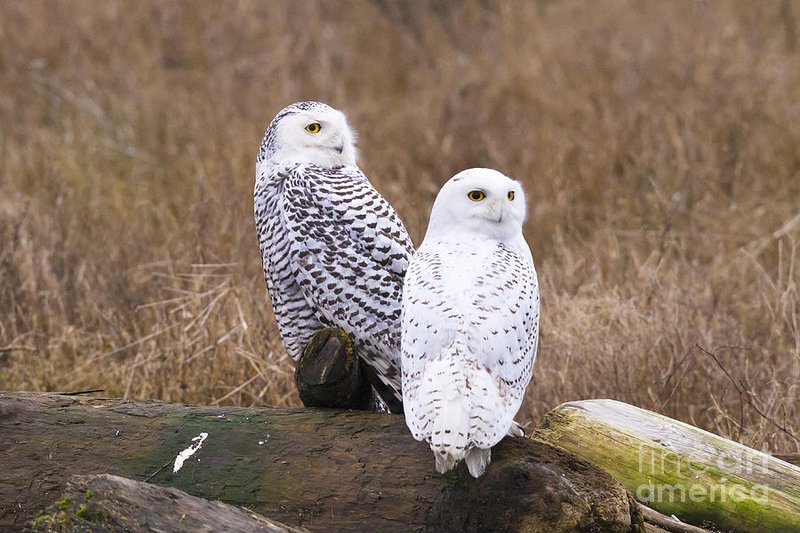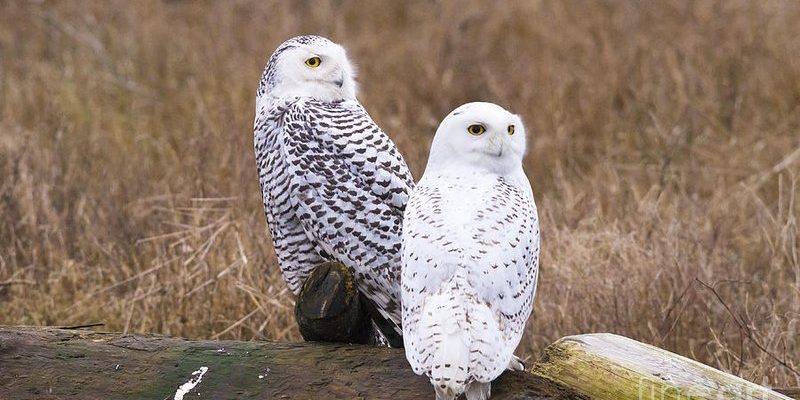
Just like how a great book captures your attention, the snowy owl does the same in the avian world. It stands out not just because of its beautiful plumage but also due to its fascinating behaviors and ecological role. Plus, understanding these differences can enhance your appreciation for birds and nature. So, grab your favorite drink, and let’s chat about these incredible creatures!
Physical Characteristics: Snowy Owl vs. Similar Species
One of the first things that catches your eye about the snowy owl is its striking appearance. With its snowy white feathers, it almost looks like it’s wearing a fluffy coat made for winter. But did you know that not all white birds are snowy owls? For example, the great horned owl, often found in similar habitats, has a much darker plumage with heavy patterns.
The snowy owl’s size also sets it apart. They can weigh anywhere from 3 to 6.5 pounds, making them larger than many of their owl cousins. In contrast, smaller owls like the eastern screech owl typically weigh under 7 ounces. It’s like comparing a cozy winter parka to a lightweight jacket! Moreover, snowy owls have distinct yellow eyes that are a bit larger proportionally compared to their body size, making them look more striking and intense.
Another physical difference is their beak. While most owls have curved beaks, the snowy owl sports a thicker, more robust beak that helps it catch and eat larger prey, such as lemmings. In contrast, smaller owls often hunt insects or tiny rodents, requiring a different beak shape and size. This reflects their dietary adaptations and hunting strategies.
Habitat Preferences: Where Snowy Owls Live
Snowy owls prefer open areas like tundras, coastal regions, and even some arctic landscapes. They thrive in cold climates where they can easily spot their prey from above. This sets them apart from other owls, like the barred owl, which tends to inhabit dense forests. Imagine a snowy owl perched on a barren tree, scanning the white landscape for movement, while the barred owl hides within the foliage, relying on its camouflage.
Interestingly, snowy owls are also migratory. During winter, they may travel south in search of food if their home territories become too barren. In contrast, many similar species, like the great horned owl, remain in their territories year-round, adapting to different seasonal changes. This lifestyle makes snowy owls somewhat nomadic, always on the lookout for the best hunting grounds.
You might be wondering how these habitat choices affect their behavior. Well, snowy owls hunt during the day in winter, taking advantage of lower light levels to catch their prey. In contrast, nocturnal owls, such as the barn owl, typically hunt at night, making their adaptations quite different based on their environments.
Diet and Hunting Strategies
Speaking of hunting, let’s talk about what snowy owls like to eat and how they catch their meals. Snowy owls primarily feast on small mammals, especially lemmings. These little rodents form a significant part of their diet, and the snowy owl is a master at hunting them. Its keen eyesight and silent flight allow it to swoop down without making a sound, making its hunting style effective.
Now, compare that to the red-tailed hawk, which also hunts small mammals but relies on soaring high in the sky to spot them. While both birds are skilled hunters, their strategies differ significantly. Red-tailed hawks might prefer open fields or cliffs, while snowy owls are more adapted to hunting in snowy landscapes.
Another key difference in diet is seasonal variation. During winter, snowy owls become more opportunistic and will eat birds, rabbits, or even fish if the lemming population drops. This versatility is necessary for survival in harsh conditions, whereas other species, like the eastern screech owl, stick to a specific diet year-round.
Behavioral Traits and Social Structures
Snowy owls are generally more solitary than many other owl species. While some owls form pairs or small groups, snowy owls usually prefer to hunt and roost alone. This behavior might remind you of a lone wolf, navigating the landscape independently. It’s crucial for their hunting technique since they rely on stealth and silence.
In contrast, barn owls often nest in colonies, working together to fend off predators. This communal lifestyle attracts more birds to a single area, which can be advantageous—there’s safety in numbers! Snowy owls, however, don’t thrive in these settings, as their hunting style requires space and a quiet environment.
Another interesting fact about snowy owls is their vocalization. While many owls are known for their hooting calls, snowy owls produce a series of high-pitched screeches and whistles, especially during the breeding season. This is quite different from the deep, resonant hoots of the great horned owl, which can be heard echoing through the woods at night. The differences in sounds reflect their lifestyles and the environments they inhabit.
Breeding and Lifespan Differences
When it comes to breeding, snowy owls are unique. They typically lay about 3 to 7 eggs in a shallow scrape on the ground, often near their hunting areas. This method of nesting is quite different from other owl species, like the barred owl, which prefers tree cavities for laying eggs. The snowy owl’s choice of nesting spots reflects their open habitat preferences.
Interestingly, snowy owls can produce more eggs in years when food is plentiful, showing a direct link between food availability and reproductive success. This adaptive strategy helps ensure the survival of their young when conditions are just right. In contrast, other owl species might have a more static breeding strategy, laying a consistent number of eggs regardless of environmental conditions.
Lifespan also varies significantly among these birds. In the wild, snowy owls can live about 10 years, but they face many dangers, including hunting and food scarcity. On the other hand, some other owl species, like the great horned owl, can live up to 25 years in the wild. This variance in lifespan can be attributed to different predation pressures and lifestyle choices.
Conservation Status and Threats
The conservation status of snowy owls is a growing concern. While they aren’t currently classified as endangered, their populations are declining due to habitat loss and climate change. As their icy habitats change, they might find it increasingly challenging to find food and suitable nesting sites. This is an alarming trend because snowy owls are not just beautiful; they play a crucial role in their ecosystem.
Comparatively, many other owl species face their threats. For example, the California spotted owl is critically endangered due to habitat destruction from logging and wildfires. Understanding these threats can help us advocate for conservation efforts, ensuring both snowy owls and their relatives have a fighting chance in a changing world.
Here’s the thing: as environments shift, threats to both snowy and similar owl species will evolve. This means we need to pay attention to their habitats and advocate for policies that protect these majestic birds. It’s not just about snowy owls; it’s about preserving the delicate balance of our ecosystems.
In summary, the differences between the snowy owl and similar bird species are fascinating and highlight the incredible diversity of the avian world. From their striking physical characteristics and unique hunting strategies to their solitary behaviors and conservation needs, each species tells a story worth knowing.
By understanding these differences, not only do we enrich our appreciation of snowy owls, but we also gain insight into the broader challenges facing birds today. So, next time you spot a snowy owl or hear about it in conversation, you’ll know just how special it really is—like finding a rare gem in the vast landscape of nature. Let’s keep learning about these creatures and work towards preserving their beautiful existence in our world.

